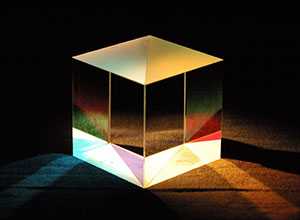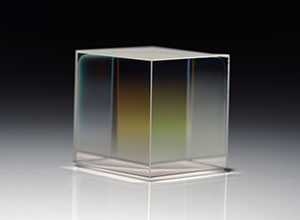Scattering of light:
The transmission of light through the core of an optical fiber totally depends on the total internal reflection of the light wave. Due to the rough and irregular surface, light rays can be reflected in random directions even at the molecular level. This is known as scattering or diffuse reflection and is usually characterized by a wide variety of reflection angles.
The scattering of light totally depends on the wavelength of the light which is being scattered. Thus, depending on the frequency of the incident light wave and the physical amplitude (or spatial scale) of the scattering center, limitations of the spatial scale of visibility arise, usually in the form of some specific micro-structural feature. Since the wavelength of the visible light is of the order of a micrometer (one-millionth of a meter), the scattering centers will have the same spatial scale dimensions.

Thus, the inconsistent scattering of light at internal surfaces and interfaces results in attenuation. In (poly)crystalline materials such as metals and ceramics, in addition to pores, most internal surfaces or interfaces form a grain boundary separating small regions of crystalline order. It has recently been shown that when the size of the scattering center (or grain boundary) becomes less than the size of the wavelength of the scattered light, the scattering no longer occurs to any significant extent. This whole phenomenon resulted in the production of transparent ceramic materials. Similarly, light scattering in optical quality glass fibers is caused by molecular level irregularities (constructive fluctuations) in the glass structure. In fact, an emerging school of thought is that glass is a finite substance of polycrystalline solids. “Domains” emits changing degrees of short-range order within this framework, becoming the building blocks of both metals and alloys as well as glass and ceramics. In the process of laser line beam splitter manufacturing, precision optical polarizers are used by the optical products manufacturer. There are microscopic structural defects distributed between and within these domains that provide the most ideal locations for light scattering.

It’s disadvantage
This same phenomenon also behaves as a disadvantage in the transparency of IR missile domes. At high optical powers, nonlinear optical processes in the fiber can also cause scattering. For linear scattering, the amount of light power transferred by the wave is proportional to the power in the wave. On the other hand, the frequency of the scattered light changes with non-linear scattering. Nonlinear scattering causes significant power loss in forwarding, backward, or sideways directions.